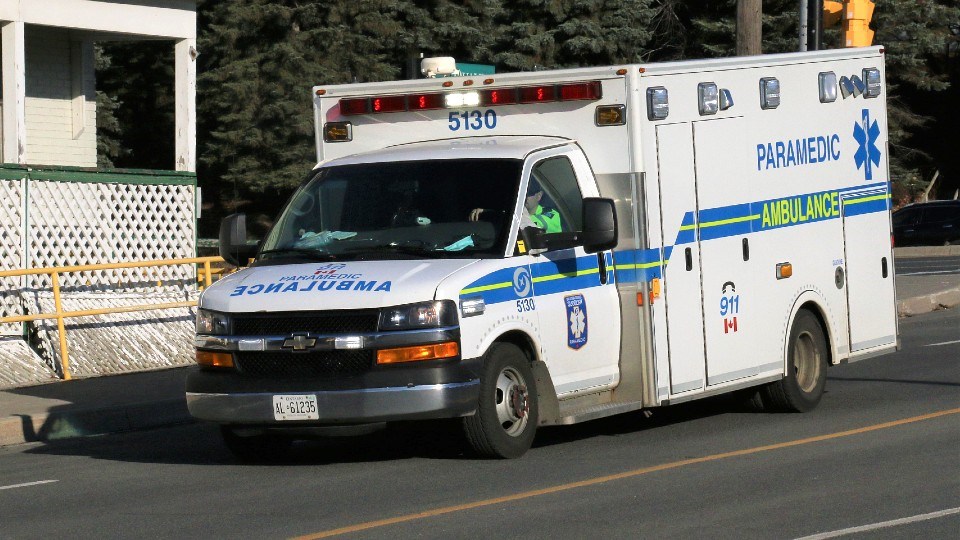The number of high-acuity paramedic responses exceeding approved targets increased in 2022, according to the city’s latest annual report.
City paramedics have operated under their current response time standard plan since 2013, and last achieved all of their targets in 2018.
In acuity, the ranks include sudden cardiac arrest at the top, followed by Canadian Triage Acuity Scale one through five, with one representing the most critical and five non-urgent.
Last year, 60 per cent of responses to sudden cardiac arrest incidents were within the six-minute target, which fell short of the city’s 70-per-cent target.
For sudden cardiac arrests, they count the amount of time it takes for any type of defibrillation to take place, whether it’s an emergency responder or bystander.
Of the 33,401 calls for service reported last year, 144 were for sudden cardiac arrests. A defibrillator was on scene within six minutes 86 times, which fell short of their 70th percentile target of 101 times.
Paramedics arrived at the scene of sudden cardiac arrest calls within six minutes 78 times in 2022, and firefighters arrived on site within six minutes eight times.
In six cases, the city reports notes that arriving within six minutes was “geographically unattainable.”
“The (sudden cardiac arrests) is a small number of calls in this response category, but a minimal number of calls over six minutes has a significant impact on the final result,” the report notes.
As Health Sciences North emergency department medical director Dr. Rob Lepage recently noted while celebrating the life-saving action of two teenagers who administered CPR, the survival rate following sudden cardiac arrest decreases by 10 per cent per minute that someone doesn’t receive CPR.
Last year, approximately 76 per cent of Canadian Triage Acuity Scale 1 calls were responded to within the eight-minute target (the goal is 80 per cent), and 82 per cent of Canadian Triage Acuity Scale 2 calls were responded to within the 10-minute target (the goal is 85 per cent).
Canadian Triage Acuity Scale 3-5 calls were responded to within 15 minutes 95-96 per cent of the time (the goal is 85 per cent).
There were 551 Canadian Triage Acuity Scale 1 calls in 2022, which are described as incidents involving people who are “critically ill or have potential for rapid deterioration.” Paramedics were 22 calls shy of meeting their response time percentage target.
There were 4,126 Canadian Triage Acuity Scale 1 calls in 2022, which are described as “potential to life, limb, or function, requiring rapid medical intervention, controlled acts.” Paramedics were 124 calls short of meeting their response time percentage target.
“Call location, increased call volume and lack of paramedic resource availability were the contributing challenges to achieve these RTS percentages,” according to the city report.
Last year’s call volume of 33,401 was a 4.4 per cent increase over 2021.
In 2021, the only call acuity level to exceed target response times were sudden cardiac arrests, of which 63 per cent were responded to within six minutes. Approximately 81 per cent of Canadian Triage Acuity Scale 1 calls were responded to within the eight-minute target in 2021, and 85 per cent of Canadian Triage Acuity Scale 2 calls were responded to within the 10-minute target.
Ambulance offload delays at Health Sciences North have continued hampering operations, with paramedics clocking approximately 4,411 hours at the hospital due to delays. This is the equivalent of removing one ambulance from service for 12 hours every day.
“Currently in 2023, the number of hours spent by Paramedic Services on (ambulance offload delays) is trending the same as seen in 2022,” according to the city’s report, which noted that neighbouring paramedic services are called in to assist in servicing calls when they experience depleted resources and high call volumes.
In addition to emergency calls, city ambulances are also used to transport non-urgent medically stable patients, usually between hospitals. There were 1,454 of these trips last year, or 4.3 per cent of the total call volume. An application for non-urgent transportation the city submitted to the Ministry of Health was denied.
During 2023 budget deliberations, the city’s elected officials approved the addition of 10 full-time paramedics to staff two 12-hour ambulances seven days per week.
According to the city’s report, this should help assist in meeting response time targets. A review will be conducted after six months to evaluate the impact of the additional ambulances. The two additional 12-hour ambulances will be added on July 1.
The municipal report on paramedic services’ 2022 response times is on the agenda for the May 15 community and emergency services committee meeting, which begins at 4:30 p.m. The report is for information only, so will only be discussed if a member pulls it aside.
The meeting can be attended in-person at Tom Davies Square or viewed online by clicking here.
Tyler Clarke covers city hall and political affairs for Sudbury.com.
